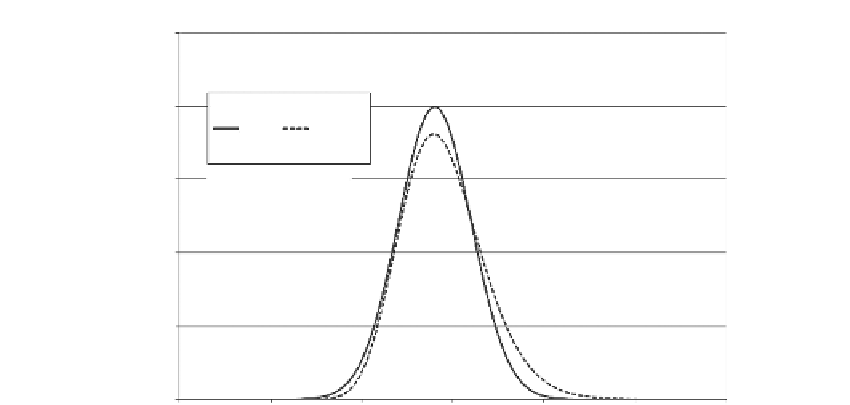Environmental Engineering Reference
In-Depth Information
0.250
0.200
Normals
Lognormal
0.150
Average
s
u
= 14 kPa
Standard deviation = 2 kPa
0.100
0.050
0.000
0
5
10
15
s
u
(kPa)
20
25
30
Figure 3.3
Normal and lognormal distributions, or PDFs.
x
is the value of the variable
σ is the standard deviation
x
is the average value of
x
Equation 3.4
gives the probability for a single value of
x
. The normal distribution curve
0 to 30 kPa, plotting these values against the value of
s
u
,
and drawing a smooth curve
through the values.
The Excel function NORMDIST was used to calculate the normal distribution curve
shown in
Figure 3.3
.
This Excel function has the form:
norMdiST ( , , , FaLSe)
xx
σ
This function was evaluated many times, for different values of
x
and the same values of
x
and σ, to develop the normal distribution curve shown in
Figure 3.3
.
The fourth argument of the NORMDIST function, FALSE, prompts Excel to calculate
the value of the PDF. If the final argument is TRUE, NORMDIST calculates the value of the
cumulative density function (CDF), discussed below.
The width of the bell-shaped curve is governed by the value of the standard deviation.
tion are 1, 2.14, and 3.5 kPa. As the standard deviation and the width of the bell-shaped
curve increase, the peak probability decreases. The areas under all three of the curves in
Figure 3.4a
are equal to unity, consistent with the fact that the total of all probabilities for
any distribution is always equal to unity.
dard deviation = 2.14 kPa) is shown with the relative frequency diagram of measured val-
ues in
Figure 3.6.
The theoretical normal distribution can be thought of as a generalized



Search WWH ::

Custom Search